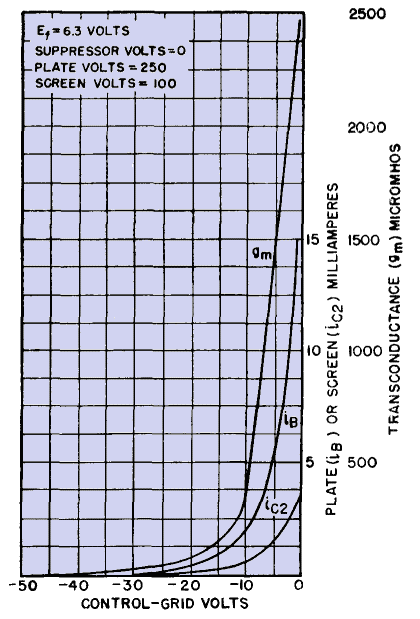| Electronic Transformers and Circuits is a free introductory textbook on transformers and related circuits. See the editorial for more information.... |

|

Home  Electronic Control Transformers Electronic Control Transformers  Automatic Gain Control Automatic Gain Control |
||||






|
||||
Automatic Gain Control
Vacuum-tube amplification factor is constant under certain conditions of operation. With high current operation the amplification factor in the region of high anode current and low anode voltage is no longer constant. Some tubes are designed to have large variations in amplification factor. These are known as variable-mu, remote cut-off, or super-control tubes. The mutual conductance of such tubes is highly variable with grid bias.
Automatic volume control (AVC) is applied in receivers to either the r-f or audio stages, to maintain approximately constant volume in spite of fading or other causes of input voltage variations. It is applied in audio amplifiers to maintain better output volume with differing voice levels. If the input grid resistor R1 in Fig. 201 is connected to a fixed negative bias the AVC is inoperative below the value of bias voltage. This is called delayed AVC; with it, no AVC is applied until a certain output level is reached. In some receivers, more than one stage may be controlled, and the AVC action is amplified. Circuits similar to this are used in power-line carrier receivers. The carrier frequency is 40 to 200 kc, and audio frequencies are employed for modulation. In transformer T1 some special problems are encountered because the transformer operates over a range of 40 to 200 kc, delivers the correct amount of voltage to the automatic gain control tube 6H6-1 for proper AVC action, delivers the proper output to the audio load without distortion, and obtains these voltages from a nearly constant current source. The transformer ratio is obtained by estimating the r-f voltage swing obtained with a square primary input current wave, and dividing this by the voltage required to produce the necessary audio output after choke L1 smooths the rectified lobes to the average value shown by the heavy dotted lines in Fig. 200. Transformer voltages and currents are calculated as in Table VII for a single-phase full-wave rectifier, but with peak audio current and voltage taking the place of d-c output.
|
||||
Home  Electronic Control Transformers Electronic Control Transformers  Automatic Gain Control Automatic Gain Control |
||||
Last Update: 2011-01-24


